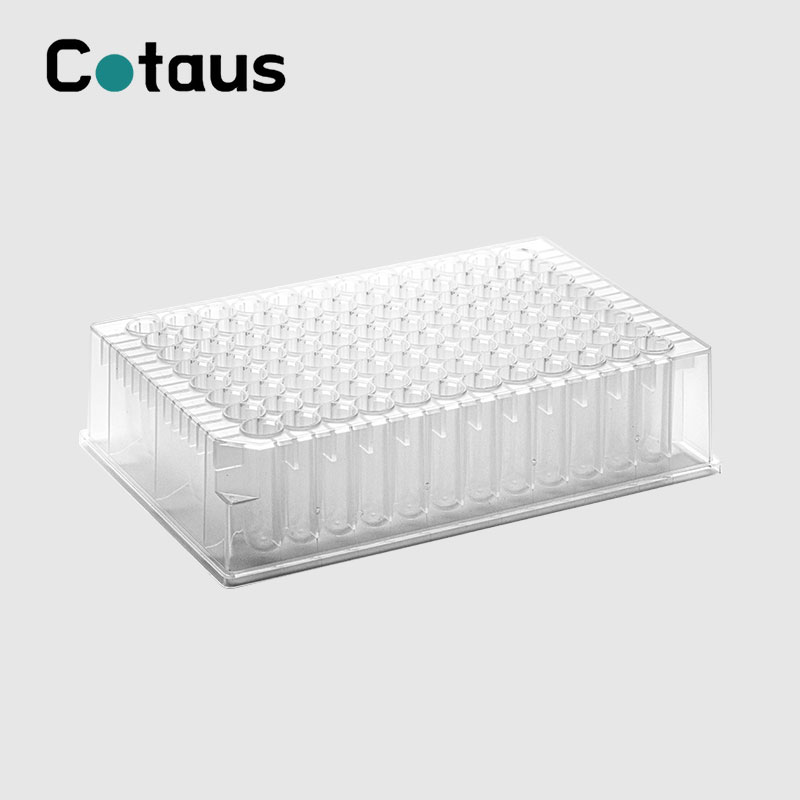Ensuring Sterility: Recommended Sterilization Methods for Deep Well Plates
2023-11-06
In the world of scientific research and laboratory experiments, maintaining aseptic conditions is paramount. Deep well plates, such as the popular 1.2ml round U-bottom design, play a crucial role in various applications, but they must be properly sterilized to prevent contamination. In this blog, we will delve into the recommended sterilization methods for deep well plates to ensure the integrity of your experiments and research.
The Importance of Sterilization
Sterilization is the process of eliminating all living microorganisms from a surface or object. In the laboratory, this process is essential to prevent contamination of samples, reagents, and experiments. Deep well plates are widely used for a range of tasks, including cell culture, sample storage, and high-throughput screening, and maintaining their sterility is vital to the success of these endeavors.
Sterilization Methods for Deep Well Plates:
1. Autoclaving:
- Recommended Material: Deep well plates made from polypropylene or polystyrene are often autoclavable. Autoclaving involves exposing the plates to high-pressure steam at elevated temperatures. It is one of the most reliable and commonly used methods for sterilization in laboratories. Typically, deep well plates can withstand the harsh conditions of autoclaving without any damage.
- Procedure: Place the deep well plates in an autoclave, ensure they are properly arranged to allow steam circulation, and autoclave at the appropriate temperature and pressure settings. Follow the manufacturer's instructions for specific autoclaving parameters for the type of deep well plate you are using.
2. Chemical Sterilization:
- Ethylene Oxide (EtO): Ethylene oxide gas can be used for the sterilization of deep well plates, especially when other methods are not suitable. However, the use of EtO requires specialized equipment and proper ventilation due to its toxicity.
- Hydrogen Peroxide Plasma:
Some deep well plates, particularly those designed for cell culture applications, can be sterilized using hydrogen peroxide plasma. This low-temperature method is less harsh on sensitive materials and can effectively sterilize the plates.
3. UV Sterilization:
UV sterilization uses ultraviolet (UV) light to kill or inactivate microorganisms. It is a surface sterilization method and may not be as effective for the interior of deep well plates. UV sterilization can be a useful supplementary step after autoclaving to ensure the outer surface of the plate is free of contaminants.
Important Considerations:
- Material Matters: Different deep well plates may have varying levels of resistance to sterilization methods. Always check the manufacturer's guidelines for compatibility with specific sterilization methods.
- Load Configuration: Properly arrange the deep well plates inside the sterilization equipment to ensure effective sterilization. Avoid overcrowding, which can hinder the process.
- Monitoring: Regularly monitor and validate the effectiveness of the sterilization process to ensure that it is achieving the desired level of sterility.
Conclusion
Deep well plates, including the 1.2ml round U-bottom design, are indispensable tools in laboratories for a wide range of applications. Maintaining their sterility is essential to prevent contamination and ensure the reliability of experimental results. Autoclaving, chemical sterilization methods, and UV sterilization are among the recommended techniques for achieving the necessary level of sterilization.
When selecting a sterilization method, consider the material of your deep well plates, the specific requirements of your experiments, and the availability of equipment. Following manufacturer guidelines and best practices for sterilization will help you maintain the integrity of your research and experiments, ensuring that they yield accurate and dependable results.



